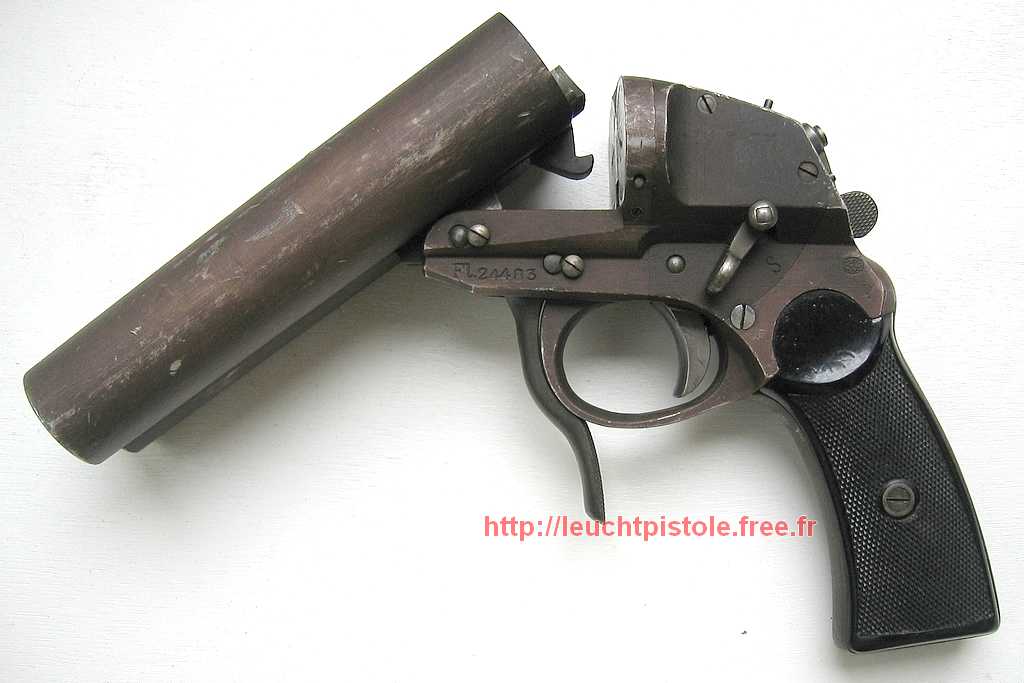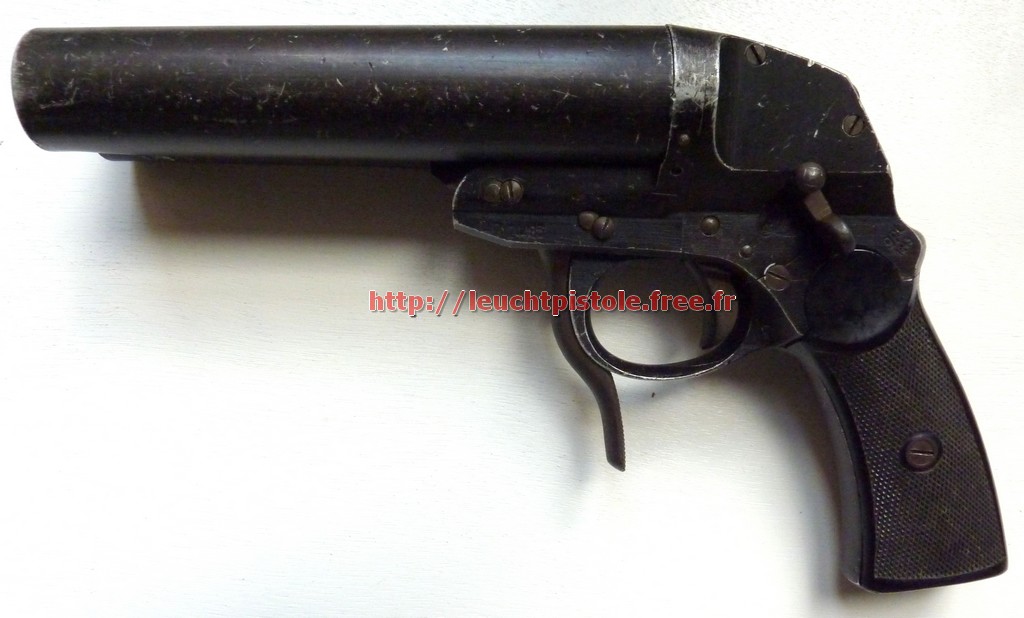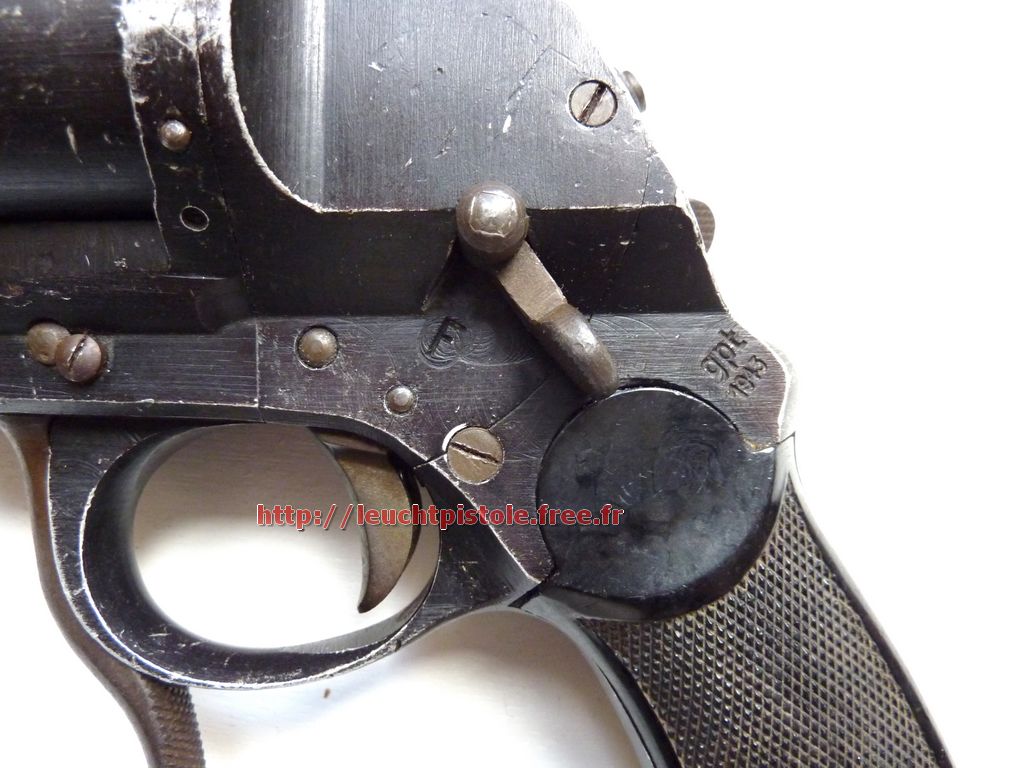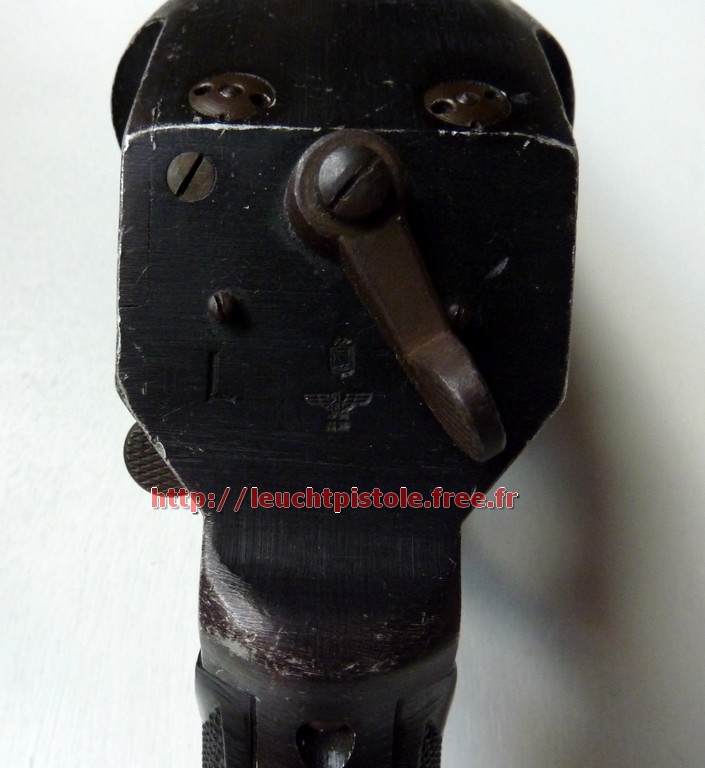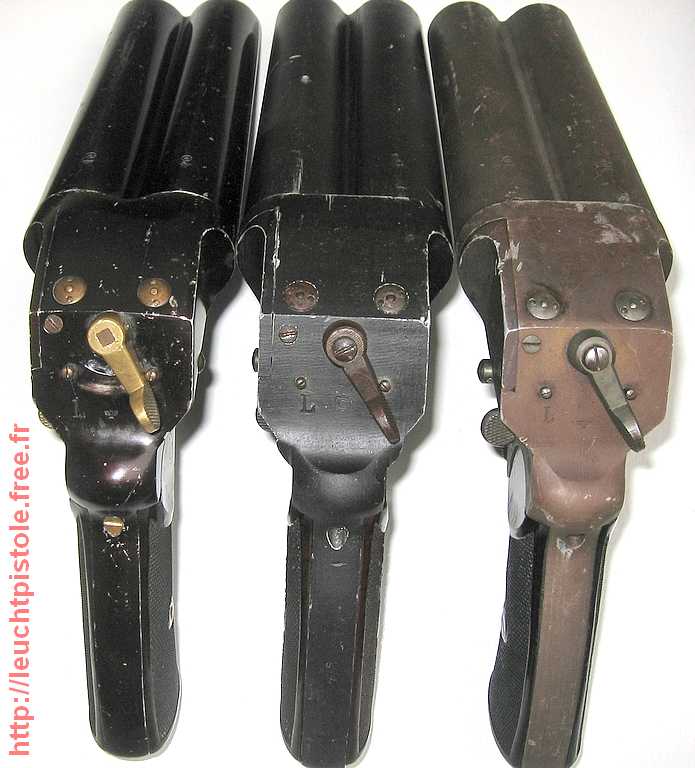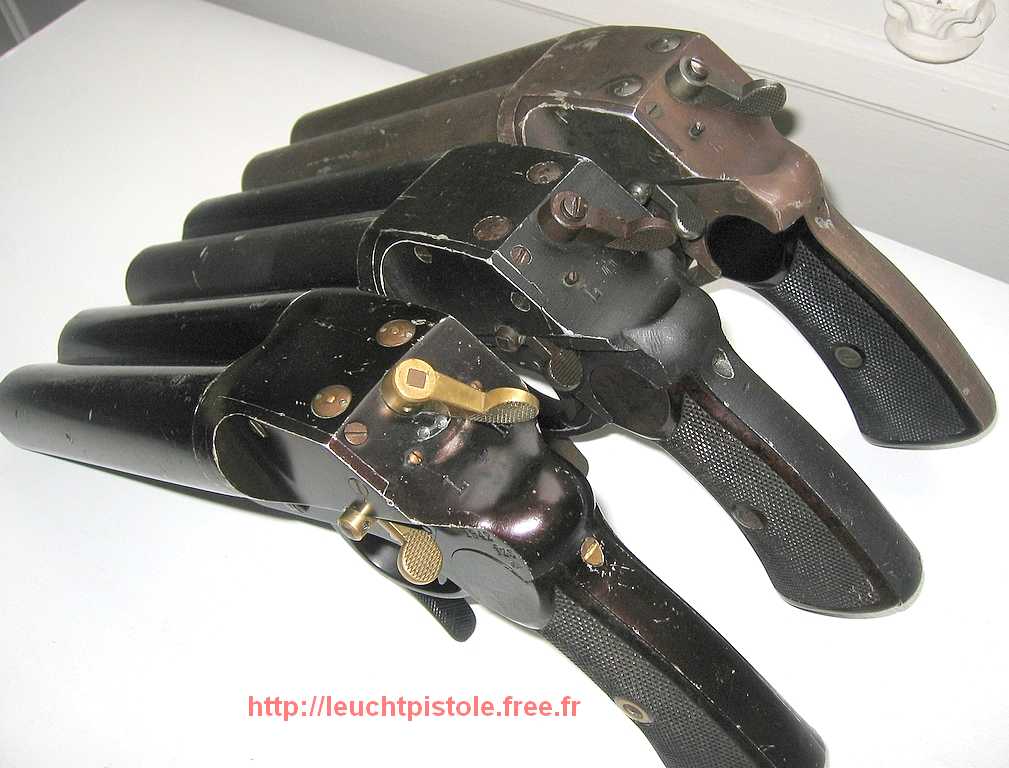Model for the Luftwaffe
In addition
to staffing the famous flare guns model Heer and LP
42, the army corps of the Luftwaffe and the Kriegsmarine
equipped models are quite different.
The latter,
still in calibre 26.5 mm for the most part, can be single or double barrel guns, this is what makes them unique in addition to their
relative low production.
The
Luftwaffe, German Air Force, is expanding rapidly since the Great War.
Because of
its diversity and the importance of its aircraft and personnel, it becomes the
Second World War, the Air Force the most powerful in the world. It has
contributed enormously to some victories. Thus the strength of his first
experience during the Spanish Civil War, the Luftwaffe was equipped with flare
guns its own drum. It was developed in 1936 and was designed as Filegerleuchtpistole Model 'L'.
The first signaller
that is most often encountered was produced by Krieghoff.
Named flare gun L, it is equipped with two barrels. Its carcass, alloy gray or
blackish contains black grips in Bakelite. It has a tilting system cannons. Its
opening is done by manipulating the lever located in front of the trigger
guard. It has a lever on top of the weapon at the rear of the guns, allowing
the selection of the firing pin and a safety lever on the left flank.
This flare
gun is quite evolved and can fire at will, by one or other of the two cannons
see through a selector. It has two triggers.
Like the
Model Heer, the model L has two pins which, in a
seemingly identical, however, have a different meaning. Indeed, if the pin is
apparent (and one can "feel" to the touch), it indicates the the internal tension of the spring. It does not mean that a
cartridge is in the chamber (meaning the spur model Heer).
It should
be noted that it is composed of over eighty pieces, some of which require
special tools for assembly and disassembly. Therefore, these two operations are
not recommended who does not have some experience of a gunsmith.
During the
war, grips initially in wood will then be made in Bakelite. Concerning the
markings, the number on the left side 24483 is the order number of the weapon.
It may be preceded by the two following codes:
- FL for Flieger (or aviator)
- LN for Luftwaffennachrichtentruppe (transmission service to the
Air Force).
On the
right side is the serial number of the weapon.
The various
manufacturers of this type of PLF are as follows (note that the code of some of
them have changed during the conflict):
|
Manufacturer Code and production |
|
|
Emil Eckholdt |
22.800 items with code ECKO and 4.500 with code ojr |
|
August Menz |
3.000 items with code AM |
|
Sander |
355 items only |
|
Gustav Bittner Werke |
5.500 items with code GBW and 9.500 items
with code gpt |
|
Heinrich Krieghoff |
100 idems
with code HK and 38.000 with code fzs |
|
Hugo Eckholdt |
500 items |
The code is
usually located behind the safety lever, above the left grip plate. It may
still sometimes be encountered in the fire selector. During the conflict, some
slight variations in manufacturing are met (mainly simplifications). They focus
on the quality of the finish of flare gun itself, and parts (form and nature
thereof) given the shortage of raw materials.
Some
examples to illustrate this:
From left to right, as the progress of the conflict.

The finish is black anodizing
tobacco tan colour through tanning gray metal.
Note the change in the nature of the material (including the selection of
canon).
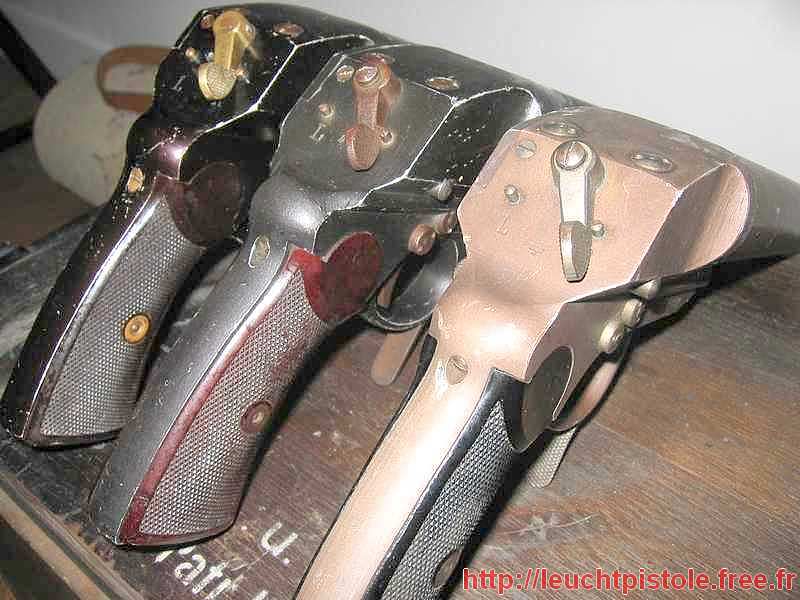
Manufacturer code fzs
in 1942 and in 1944


Manufacturer code Ecko

Selector canon (L to R Links and Recht).
Ergot status spring tension and load indicator.

The other flare guns which have
equipped the Luftwaffe are actually systems of chambers for the shooting of
26.5 mm ammunition.
Indeed, it was necessary for mission, to take advantage of fireworks signal
from the aircraft without having to open a door or opening.
Thus, three production companies are responsible for its devices. The first of
these is the company located in Duren Hanneman which
produces remotely commanded flare guns loaded before the flight.
The second mechanism, quite ingenious, was created by Arado
Flugzeugwerke in
It placed in the wing, could be
responsible for four fireworks and operated manually, mechanically or
hydraulically.
The last device was produced in Berlin-Zehlendorf by
firm H. Elektromekanik List. Also equipped with a
store of 4 cartridges, it was the most used by the Luftwaffe and could be
electrically operated remotely with a keyboard specially designed for the
selection.
Some detailed pictures of Model
L:
Model L dated 1942 and
manufactured by fzs (Heinrich
Krieghoff)


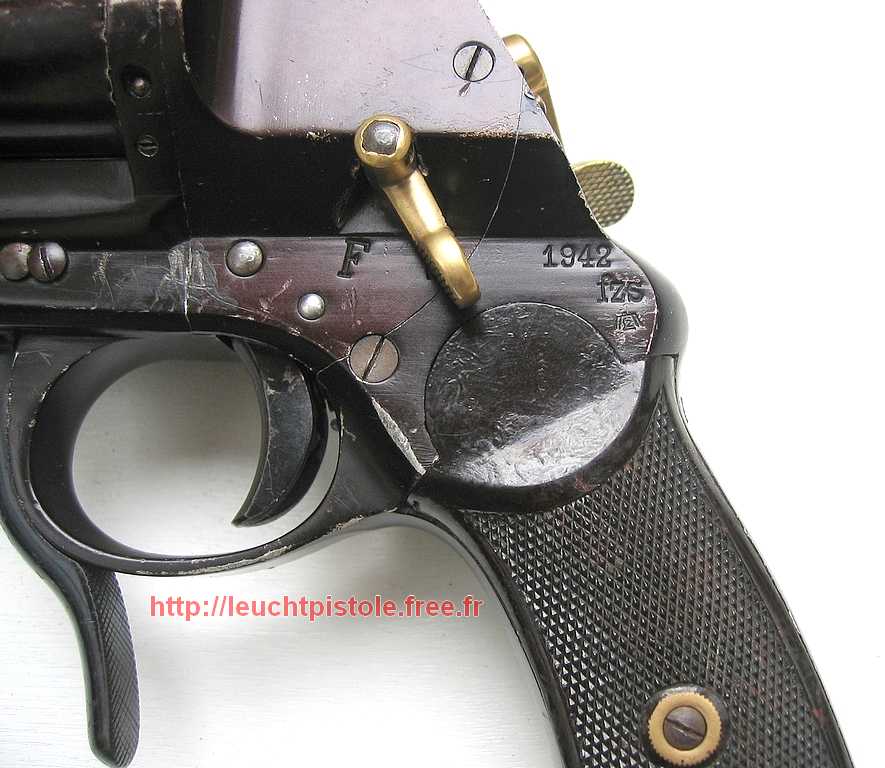
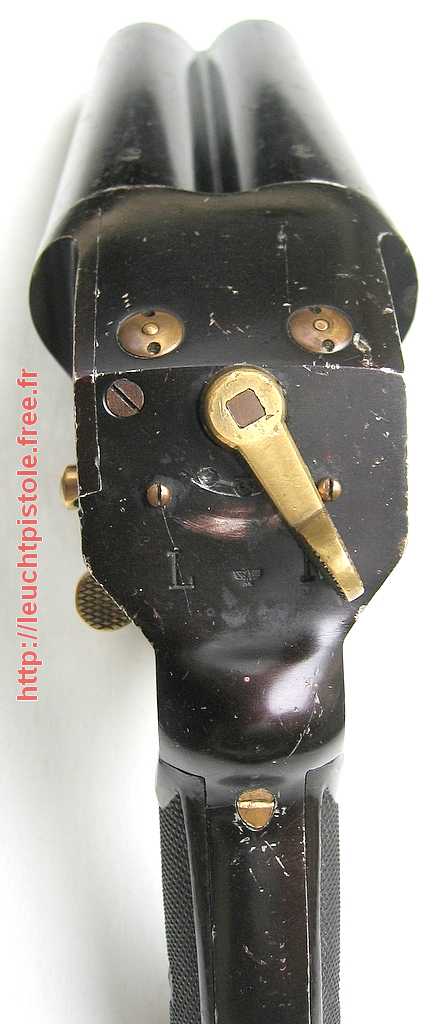

Model L without any date and
manufactured by Ecko



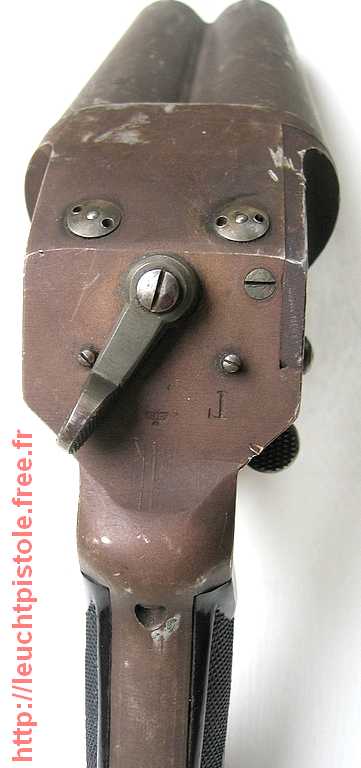
Model L dated 1944 and
manufactured by fzs
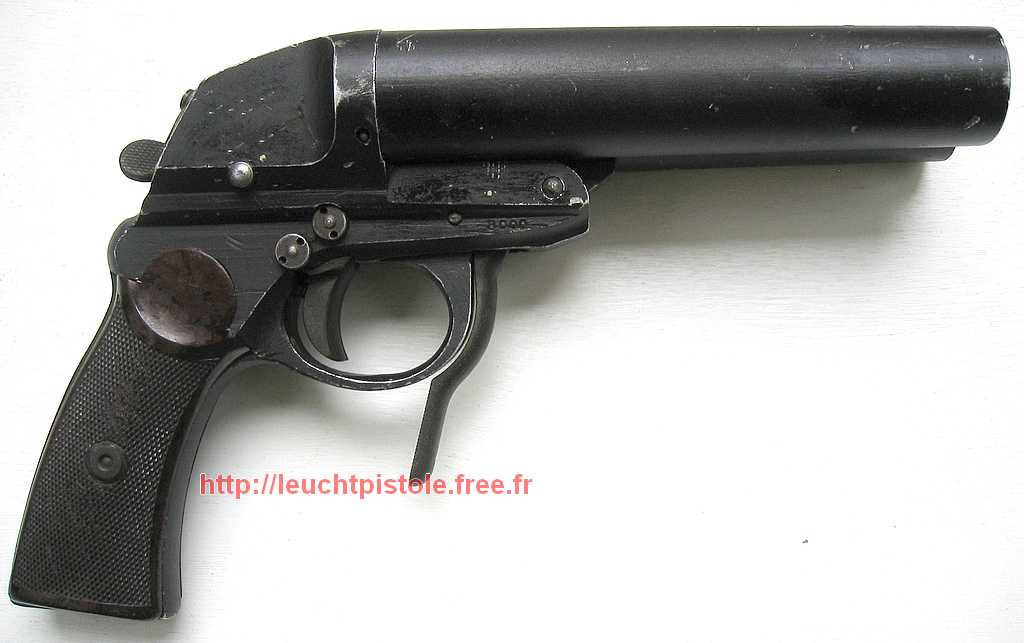
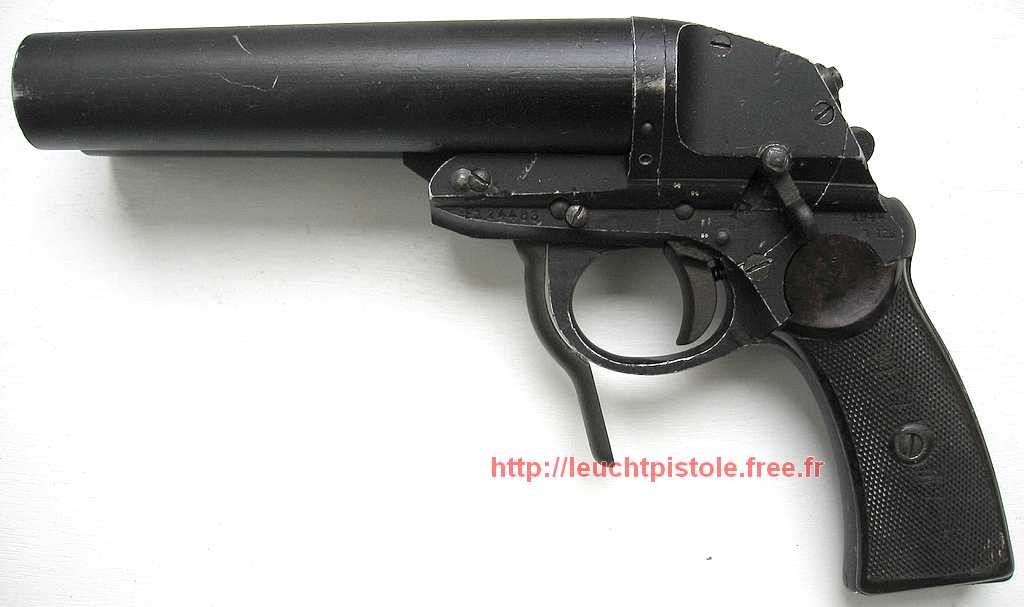

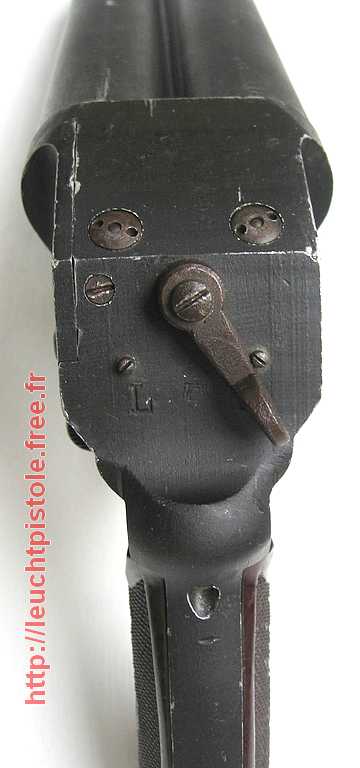
Model L datet 1943 and manufactured by gpt
Some rare LP produced by Sander (due to the little number designed by the manufacturer) - (many thanks to their owners for the pictures provided)
(Clic on picture with your mouse to see it in its original format)
Example with the Id: 290
Example with the Id: 355
